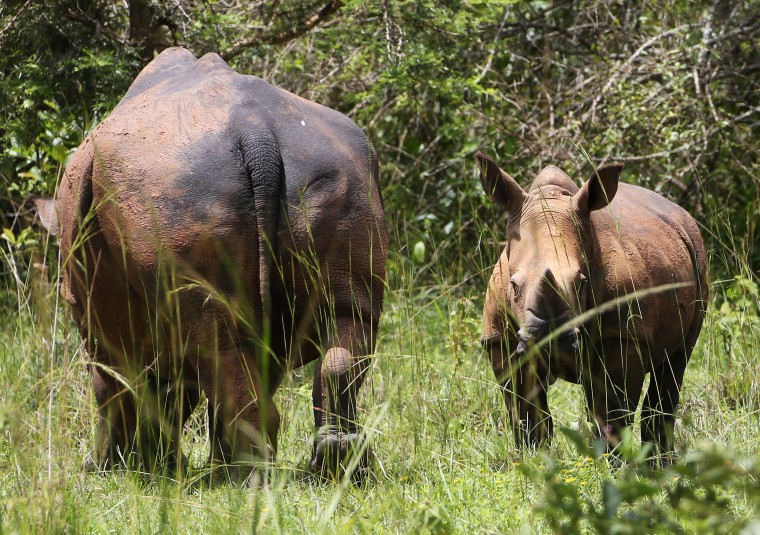If it weren’t for the presence of humans, elephants and rhinos would likely be roaming across Europe today, and North and South America would also be flush with a variety big mammals.
That’s the conclusion of a study that projects what a world map of mammals would look like if Homo sapiens had never existed. The researchers say that much of the world would resemble the Serengeti of Africa, virtually the last place on Earth that's home to a high diversity of large mammals.
"The study shows that large parts of the world would harbor rich large mammal faunas, as diverse as seen in protected areas of eastern and southern Africa today, if it was not for historic and prehistoric human-driven range losses and extinctions," Professor Jens-Christian Svenning, a biologist at Aarhus University in Denmark, told NBC News in an email.
"Most safaris today take place in Africa, but under natural circumstances, as many or even more large animals would no doubt have existed in other places, e.g. notably parts of the New World such as Texas and neighboring areas and the region around northern Argentina-southern Brazil," Søren Faurby, the study's lead author and a postdoctoral fellow at the Department of Bioscience, at Aarhus University in Denmark, said in a statement.

The researchers previously presented a study that concluded humans, not climate change, were largely responsible for the mass extinction of large mammals during the last Ice Age.
Related: 'Super Predators': Humans Hunting Animals of Wrong Size and Age
In the new study, they investigated what the natural worldwide diversity patterns of mammals would resemble were it not for past and present human impacts. They took into account the natural distribution of each species according to its ecology, biogeography and the natural environment.
Among the conclusions: If it weren’t for humans, most of northern Europe would probably now be home to wolves, moose and bears — and even elephants and rhinoceroses.
The U.S. and adjacent areas would also be particularly rich in large mammal species.
"The species includes well-known U.S. large mammals such as grizzly bear, cougar, bison, elk, moose and pronghorn, but also extinct species such as prairie mammoth (aka Columbian mammoth), mastodon, wild horse and the extinct stilt-legged horse, several species of giant ground sloths, an extinct camel and several extinct llamas, dire wolf, American lion, short-faced bear, extinct capybara, sabertooth cat, scimitar cat, and many other large species," Svenning said.
The researchers hope the findings can provide a baseline for ways to restore and conserve nature.
Related: Humans Blamed for Extinction of Mammoths, Mastodons and Giant Sloths
The study was been published in the scientific journal Diversity and Distributions.